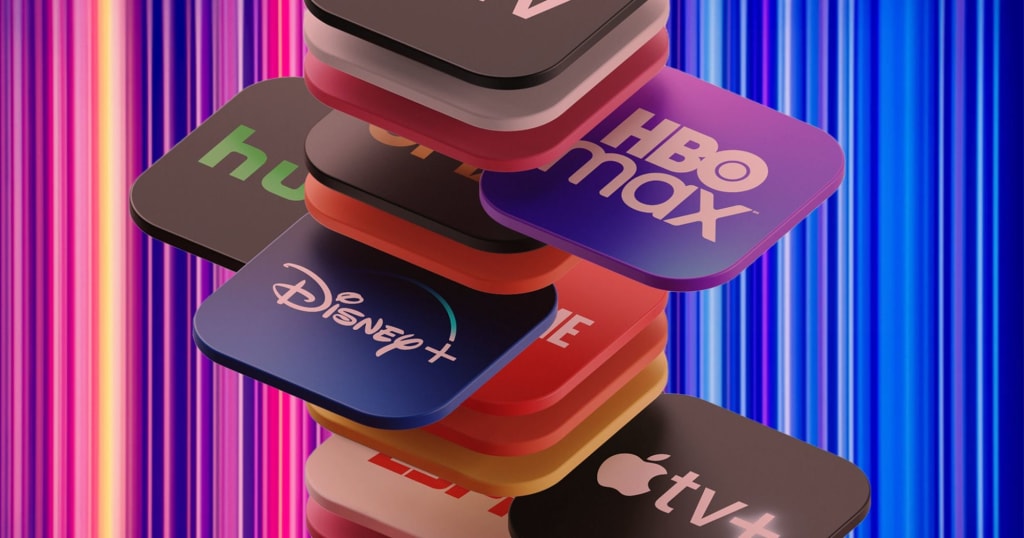The rise of streaming services has fundamentally changed the way we consume media. From how we watch movies and TV shows to how we discover new content, streaming has revolutionized entertainment. This article will explore the history of streaming services, their impact on traditional media, the technological advancements that have enabled their success, and what the future might hold for this ever-evolving industry.

The History of Streaming Services
Streaming services began as an innovative solution to the limitations of traditional broadcast and cable TV. The concept of streaming media dates back to the late 1990s, with early attempts by companies like RealNetworks offering audio and video streaming. However, it wasn’t until the mid-2000s that the technology and internet speeds advanced enough to support widespread video streaming.
Netflix, which started as a DVD rental service in 1997, launched its streaming service in 2007. This move marked the beginning of a new era in entertainment. By offering a vast library of content accessible at any time, Netflix transformed the way audiences consumed media. Other companies quickly followed suit, with Hulu launching in 2008 and Amazon Prime Video in 2011.
These platforms offered a convenient alternative to traditional TV, providing on-demand access to a wide variety of content. The subscription-based model also allowed for a continuous revenue stream, enabling these services to invest heavily in original content. The introduction of binge-watching, where viewers could watch entire seasons of TV shows in one sitting, further cemented the popularity of streaming services.
Impact on Traditional Media
The rise of streaming services has had a profound impact on traditional media. Cable TV subscriptions have been steadily declining as more consumers cut the cord in favor of streaming. This shift has forced traditional broadcasters to adapt or risk becoming obsolete.
One significant impact has been on advertising revenue. With fewer viewers tuning into live TV, advertisers have had to find new ways to reach audiences. This has led to an increase in targeted digital advertising, which can be more effective but also more intrusive. Additionally, many streaming services offer ad-free experiences, attracting viewers who are tired of commercial interruptions.
The decline in cable subscriptions has also affected the production and distribution of content. Networks have had to rethink their strategies, with many launching their own streaming platforms. For example, Disney launched Disney+ in 2019, and NBCUniversal introduced Peacock in 2020. These services offer exclusive content, aiming to compete directly with established players like Netflix and Amazon Prime.
Moreover, the rise of streaming has democratized content creation. Independent filmmakers and small studios can now distribute their work directly to audiences without the need for traditional distribution channels. This has led to a more diverse array of content available to viewers, giving rise to niche genres and unique storytelling.
Technological Advancements Enabling Streaming
The success of streaming services is largely due to significant technological advancements. High-speed internet, cloud computing, and improved video compression technologies have all played crucial roles in making streaming viable and accessible.
High-speed internet is essential for streaming high-quality video content without buffering or interruptions. The proliferation of broadband and the advent of 4G and 5G networks have made it possible for more people to access streaming services. These advancements have also enabled streaming on mobile devices, allowing users to watch content on the go.
Cloud computing has revolutionized the way streaming services operate. By storing content in the cloud, services can offer vast libraries of media without the limitations of physical storage. This also allows for seamless updates and improvements to the platform, enhancing the user experience.
Data compression technologies, such as H.264 and HEVC, have improved the efficiency of streaming video. These codecs reduce the amount of data required to stream high-quality video, making it possible to deliver 4K and even 8K content over the internet. This ensures that viewers can enjoy a cinematic experience from the comfort of their homes.
Additionally, advances in artificial intelligence and machine learning have allowed streaming services to offer personalized recommendations. By analyzing viewing habits and preferences, these platforms can suggest content that users are likely to enjoy, increasing viewer engagement and satisfaction.
The Future of Streaming Services
The future of streaming services looks promising, with continued growth and innovation on the horizon. As technology continues to advance, we can expect to see even more immersive and personalized viewing experiences.
One potential development is the integration of virtual reality (VR) and augmented reality (AR) into streaming platforms. This could create entirely new ways for audiences to engage with content, from interactive storytelling to virtual cinema experiences. Major companies are already investing in VR and AR, signaling that these technologies could play a significant role in the future of entertainment.
Another trend is the increasing globalization of streaming services. Companies are expanding their reach into international markets, offering localized content and subtitles to appeal to diverse audiences. This globalization will likely lead to a more interconnected world of entertainment, where viewers can easily access content from different cultures and languages.
Moreover, the competition among streaming services is likely to intensify. As more players enter the market, there will be a greater emphasis on exclusive content and unique features to attract subscribers. This competition can drive innovation, leading to better quality and more varied content for viewers.
Sustainability and environmental concerns are also becoming important considerations for streaming services. Data centers that support cloud storage and streaming consume significant amounts of energy. Companies are starting to explore greener alternatives, such as renewable energy sources and more efficient data management practices, to reduce their environmental impact.
Challenges Facing Streaming Services
Despite their rapid growth and popularity, streaming services face several challenges that could impact their future success. These challenges range from content saturation and competition to regulatory issues and technological barriers.
One of the main challenges is content saturation. With so many streaming platforms available, each vying for exclusive content, viewers can feel overwhelmed by the sheer volume of choices. This can lead to subscription fatigue, where consumers become reluctant to pay for multiple services. To combat this, streaming platforms need to focus on curating high-quality content and improving user experience to retain subscribers.
Competition is another significant challenge. As more companies enter the streaming market, the battle for exclusive content and viewer attention intensifies. This competition can drive up the cost of acquiring and producing original content, making it harder for smaller or newer services to compete with established giants like Netflix, Amazon Prime, and Disney+. To stay competitive, streaming services must continually innovate and offer unique value propositions.
Regulatory issues also pose potential hurdles for streaming services. Different countries have varying regulations regarding content distribution, copyright laws, and data privacy. Navigating these legal landscapes can be complex and costly. Moreover, as streaming services become more dominant, they may face increased scrutiny and regulation from governments seeking to protect local media industries and consumer interests.
Technological barriers can also impact the growth of streaming services. While high-speed internet and advanced video compression technologies have made streaming more accessible, there are still regions with limited internet infrastructure. Expanding into these areas requires significant investment in infrastructure and technology to ensure reliable and high-quality streaming experiences.
The Role of Original Content
Original content has become a cornerstone of the streaming industry. Platforms like Netflix, Amazon Prime, and Hulu have invested heavily in producing their own movies, TV shows, and documentaries. This strategy not only differentiates them from competitors but also builds a loyal subscriber base.
The success of original content can be attributed to several factors. Firstly, it allows streaming services to offer exclusive material that cannot be found elsewhere. This exclusivity drives subscriptions and keeps viewers engaged. For example, Netflix’s “Stranger Things” and Amazon Prime’s “The Marvelous Mrs. Maisel” have garnered critical acclaim and large audiences, boosting the platforms’ reputations and subscriber numbers.
Secondly, original content provides streaming services with greater control over their programming. Instead of relying on third-party studios and networks, they can produce content that aligns with their brand and audience preferences. This control also extends to global distribution, allowing services to reach international markets more effectively.
Moreover, original content has led to increased diversity and representation in media. Streaming platforms often take more risks with their programming, supporting unique and innovative projects that might not fit the traditional network mold. This has resulted in a wider range of stories and voices being brought to the screen, appealing to diverse audiences and contributing to cultural shifts.
However, producing original content is not without challenges. It requires significant financial investment and involves high risks, as not every project will be successful. Streaming services must balance their portfolios, investing in both sure bets and experimental projects to maintain a steady stream of engaging content.
- Starburst Wilds Explained: How This Feature Keeps Players Hooked - January 29, 2025
- The Role of CBD Oil in Managing Symptoms of Candida Infections - October 3, 2024
- Cultural Influences on Slot Game Design in Thailand - August 21, 2024
